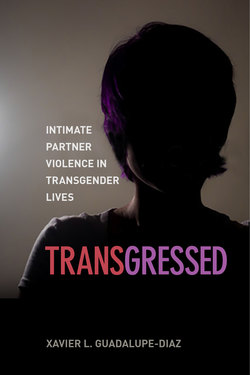Читать книгу Transgressed - Xavier L. Guadalupe-Diaz - Страница 10
На сайте Литреса книга снята с продажи.
Expanding beyond Early Feminist Explanations
ОглавлениеIn the early 1990s, psychologists David Island and Patrick Letellier made a provocative break from the dominant feminist paradigm, arguing that intimate partner violence was “not a gender issue at all since both men and women could be batterer or victim.”38 Rather, they argued that the focus should be on the batterer’s psychological characteristics, stating that “individual acts of domestic violence are not caused by a victim’s provocation, not by a violent, patriarchal society, not by alcohol or by any other excuse.” In their explanations of gay male battering, Island and Letellier proposed that violence is learned, that batterers choose to be violent, and therefore utilize it to cause harm and to enforce power and control. While these points were influential in challenging the dominant framework, they did ignore key evidence that intimate partner violence is gendered in many aspects of prevalence and dynamics (e.g., injury, outcomes, and self-defense) and that many people without psychological problems batter. As a dominant system in US culture, patriarchy indoctrinates all people (regardless of gender identity) into rigid constructs of gender that promote violence in intimate relationships.
To merge various theoretical explanations together, psychologist Gregory Merrill later proposed an integration of the social and psychological aspects of intimate partner violence.39 While learning and choosing are primarily psychological or individualistic explanations of battering, he emphasized the context of the opportunity to abuse. For batterers, the opportunity to abuse and learn what one can get away with is gendered. Here, men are particularly at risk for perpetration due to the same gender socialization factors to which sociocultural feminist researchers point. Not only are men encouraged to be violent, but they also learn that this violence is often normalized and effective, which, in turn, can further enable abuse.
As an extension to this thinking, it is important to acknowledge that gender is not the only social factor involved; race, class, sexual orientation, and gender identity all contextualize the abuser’s opportunity and choice to abuse. The connection of the broader structure to micro-level processes highlights how social context may lead to the perception that one member of the relationship has relatively more or less social power than the other. Power here can be understood as the ability to project one’s own desires onto another. With less power, there is a diminished (but not eliminated) capacity to enact negative consequences against a potential perpetrator. This can again be gendered because men in our society are typically ascribed this social power. However, in the power’s application, all relationships, regardless of the sexual orientations and gender identities involved, are subject to power dynamics that are informed by patriarchy.
Sociologist Betsy Erbaugh argued that the victim-perpetrator gendered binary in dominant intimate partner violence theorizing is a central factor in the silencing of LGBTQ victims.40 As a result of this leading framework and limited explanation of violence, the cultural construct of “victim” is gendered—always feminine. This gendered, heterosexist assumption behind perpetrator-victim dynamics assumes that the victim is passive and submissive; it assumes effeminacy. Within the context of same-gender relationships, this pervasive construct of the feminine victim assumes that the victim in the relationship is the “woman” or the passive and submissive member. Conversely, it assumes that the perpetrator is the “man” or the aggressive and dominating member. In same-gender relationships, or really any relationship, the presented gender identity of a victim or perpetrator may not coincide with normative expectations. These normative expectations drive the cultural impulse to make assumptions about individuals on the basis of their presented gender; these impressions are often misguided and do not inform any understanding of the abusive dynamics that are manifesting. Gendered assumptions based on cultural expectations have far-reaching consequences for those responding to or witnessing intimate partner violence. Among the many potential outcomes, gendered assumptions can undermine abuse between feminine partners and/or misidentify abuse between masculine partners.
